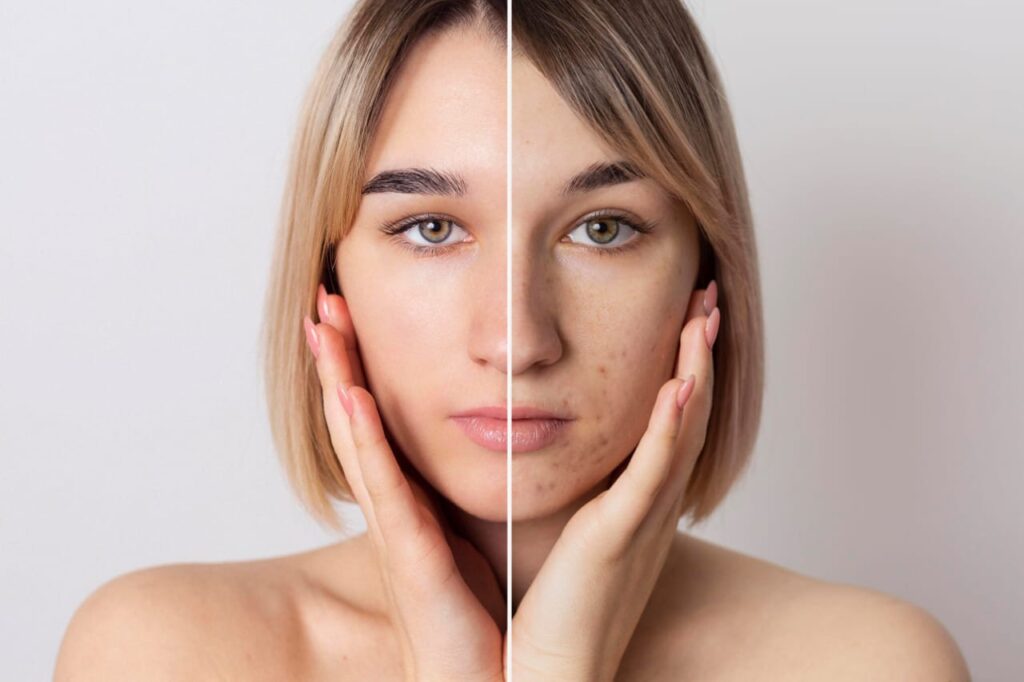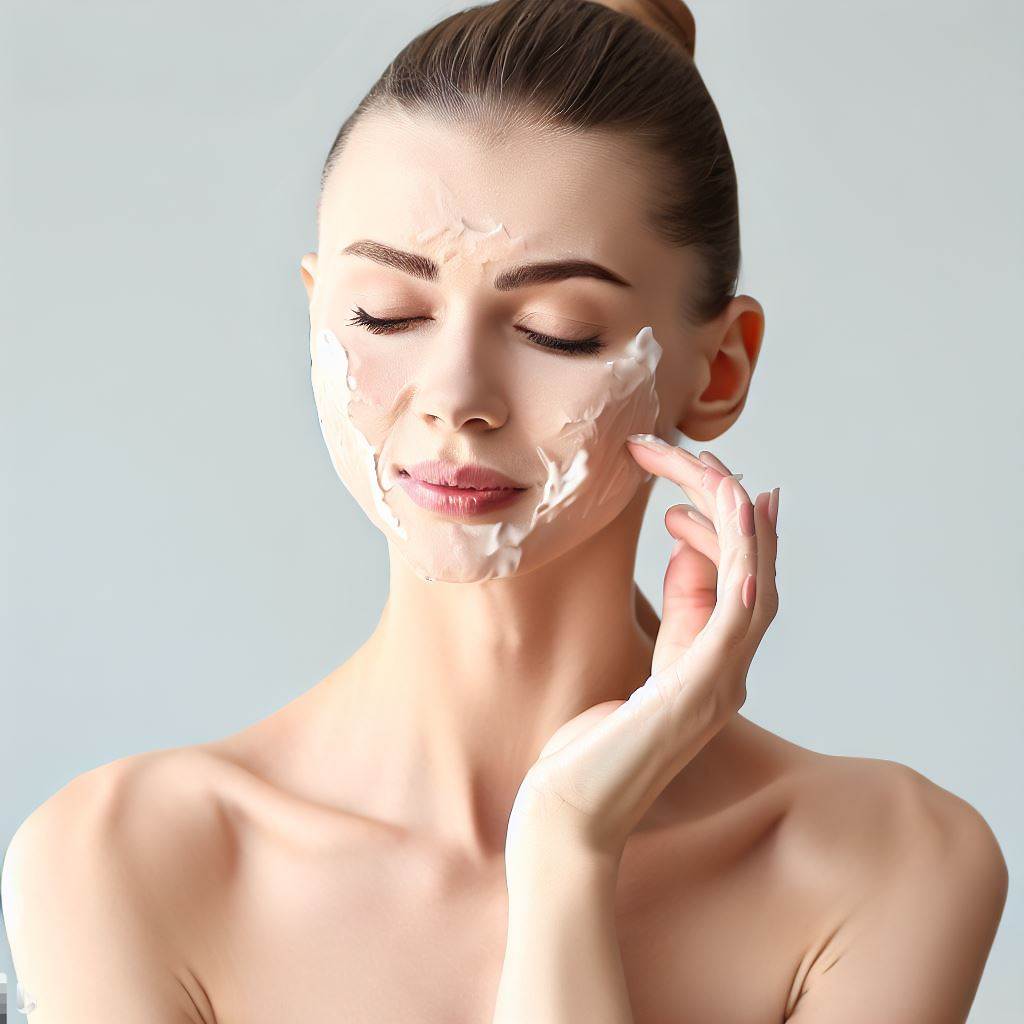Uncovering the Root Causes of Facial Pigmentation
The journey to clear, radiant skin often involves understanding the underlying issues that lead to discoloration. Facial pigmentation is a common concern among individuals worldwide, regardless of age or gender. The presence of dark spots, uneven skin tone, and other discolorations can significantly impact one’s self-esteem. But to effectively treat these concerns, we must first uncover their root causes. “What is Hyperpigmentation and Why Does It Occur?”
Introduction to Hyperpigmentation and its Relevance:
Hyperpigmentation refers to the darkening of the skin, resulting from an overproduction of melanin, the pigment responsible for the color of our skin, hair, and eyes. The manifestation of hyperpigmentation can be in the form of freckles, age spots, melasma, or even post-inflammatory marks from acne or other skin injuries. It’s a prevalent concern and is one of the primary reasons people seek dermatological advice. Understanding its root causes is essential in devising an effective treatment plan and ensuring long-lasting results.
The Science Behind Melanin Production and Skin Coloration:
Our skin’s color is determined by melanin, produced by cells called melanocytes. When the skin experiences certain triggers, these melanocytes can produce excess melanin, leading to hyperpigmentation. Several factors can stimulate this overproduction:
Sun Exposure: The most common trigger. UV rays from the sun can stimulate melanocytes, leading to an overproduction of melanin. This is the body’s way of protecting the skin from UV damage. However, prolonged exposure without adequate protection can lead to sunspots or solar lentigines.
Hormonal Changes: Conditions such as pregnancy, taking birth control pills, or other hormonal therapies can lead to melasma – a type of hyperpigmentation characterized by brown or grayish patches on the face.
Skin Injuries: Post-inflammatory hyperpigmentation (PIH) occurs after the skin experiences trauma. This can be from cuts, burns, acne, or certain skincare treatments. As the skin heals, it can sometimes produce excess melanin, leading to dark spots.
Genetic Factors: Some individuals are genetically predisposed to hyperpigmentation. If family members experience it, there’s a higher likelihood you might too.
“Uncovering the Root Causes of Facial Pigmentation: Understanding and Treating Hyperpigmentation” is not just about identifying the causes, but also about paving the way for effective solutions. By gaining a deeper insight into why hyperpigmentation occurs, we can take informed steps to treat and prevent it, ensuring healthier, more radiant skin.
“Common Triggers and Causes of Facial Pigmentation”
Facial pigmentation can sometimes seem like an unsolicited surprise. By “Uncovering the Root Causes of Facial Pigmentation: Understanding and Treating Hyperpigmentation,” we can empower ourselves with knowledge and adopt effective preventative measures. Let’s explore the usual suspects behind these skin changes.
Sun Exposure and UV rays: Sunlight, while vital for many physiological processes, can also be a significant contributor to skin discoloration. UV rays stimulate melanocytes, leading to increased melanin production. Over time, without consistent sun protection, this can manifest as dark spots, commonly referred to as sun spots or age spots.
Hormonal Changes and Melasma: Hormonal fluctuations, especially those experienced during pregnancy, menopause, or when on certain medications like birth control, can lead to melasma. It’s characterized by brownish patches that often appear symmetrically on the face.
Post-inflammatory Hyperpigmentation (PIH): A response to skin trauma, PIH results when the skin’s healing process leads to excess melanin production. Whether it’s due to acne, burns, cuts, or certain cosmetic treatments, the aftermath can be discolored marks that persist long after the initial trauma has healed.
Genetics and Hereditary Factors: Our genes play a crucial role in determining our skin’s response to external factors. If close family members have experienced hyperpigmentation issues, it might indicate a genetic predisposition.
“Understanding the Different Types of Hyperpigmentation”
Decoding the various types of hyperpigmentation can provide clarity when seeking treatments. Armed with this knowledge, one can navigate the journey to even-toned skin more effectively.
“Distinguishing Melasma, Sun Spots, and Post-inflammatory Hyperpigmentation”
Melasma: Often referred to as the ‘mask of pregnancy’, melasma appears as symmetrical brown or gray-brown patches, commonly on the cheeks, bridge of the nose, forehead, chin, and above the upper lip. It’s closely linked with hormonal fluctuations and can be exacerbated by sun exposure.
Sun Spots (Solar Lentigines): These flat, brown spots, often found on sun-exposed areas like the face, hands, and arms, are a direct result of prolonged UV exposure. They’re more common in older adults, indicating years of cumulative sun exposure.
Post-inflammatory Hyperpigmentation: These are dark spots or patches that appear at sites of previous skin injury or inflammation. Their color can range from pink to red, brown, or black, depending on skin type and the nature of the injury.
Age Spots and Freckles: While age spots are similar to sun spots, appearing in sun-exposed areas as small, darkened patches, freckles are small, brownish spots that can appear anywhere on the body, resulting from genetics and UV exposure.
“The Role of Skin Types in Hyperpigmentation”
Every individual’s skin reacts differently to external stimuli. This variability is significantly influenced by one’s inherent skin type.
Response to Sun Exposure and Damage: Fair-skinned individuals might experience sunburns more frequently, while those with darker skin tones may tan more readily. However, darker skin is more prone to hyperpigmentation issues post-injury.
Fitzpatrick Skin Typing: This classification system, developed by dermatologist Thomas Fitzpatrick, categorizes skin types based on their UV responsiveness. It ranges from Type I (very fair skin that burns easily) to Type VI (dark skin that rarely burns). Knowing one’s Fitzpatrick skin type can help anticipate the skin’s response to certain treatments and its predisposition to hyperpigmentation.
“Treating Hyperpigmentation: Expert Recommendations”
Hyperpigmentation, though challenging, is not insurmountable. “Uncovering the Root Causes of Facial Pigmentation: Understanding and Treating Hyperpigmentation” is pivotal for targeted and efficient treatments. Let’s navigate through expert-endorsed options for managing and mitigating these skin concerns.
“Topical Treatments: Creams, Serums, and Lotions”
For many, the first line of defense against hyperpigmentation is topical treatments. These products, when chosen wisely and used consistently, can significantly diminish the appearance of unwanted dark spots.
- Ingredients to Look For:
- Vitamin C: An antioxidant powerhouse, vitamin C not only brightens the skin but also combats free radicals, preventing further skin damage.
- Hydroquinone: Often referred to as a skin-bleaching agent, hydroquinone works by decreasing melanin production, thereby fading dark spots.
- Retinoids: Derivatives of vitamin A, like retinol and tretinoin, expedite skin cell turnover, promoting the shedding of pigmented cells and the emergence of new, fresh skin.
- The Significance of Sunscreen: No hyperpigmentation treatment plan is complete without sun protection. Sunscreen guards the skin from further UV damage, ensuring that the topical treatments can work without interference. Regular application can prevent the darkening of existing spots and the formation of new ones.
“Professional Treatments for Hyperpigmentation”
When topical treatments don’t suffice, or when quicker results are desired, professional interventions come to the rescue.
Chemical Peels: By applying a chemical solution to the skin, the outer layers peel off, making way for newer, less pigmented skin to surface. The depth and strength of the peel determine the results and recovery time.
Microdermabrasion: This is a minimally invasive procedure wherein tiny exfoliating crystals are sprayed on the skin, effectively removing its outermost layer, and with it, some of the pigmentation.
Laser Treatments: Lasers target melanin, breaking down the pigment, which is then naturally cleared away by the body. Multiple sessions might be necessary, but results are often promising.
The Importance of Consulting a Dermatologist: Before diving into any professional treatment, a consultation with a dermatologist is paramount. They can assess the type and depth of pigmentation, ensuring that chosen treatments align with skin health and aesthetic goals.
“Preventing Facial Pigmentation: Proactive Measures”
While treating hyperpigmentation is crucial, prevention is equally, if not more, significant. Taking proactive steps not only safeguards against further pigmentation but also optimizes the results of any ongoing treatments.
“Daily Skincare Habits to Combat Hyperpigmentation”
Consistency is key when it comes to skincare. Establishing and adhering to a daily regimen can significantly deter the onset of hyperpigmentation.
Importance of a Consistent Skincare Routine: Regularly cleansing, moisturizing, and exfoliating ensures that the skin remains healthy, fortified, and less susceptible to external stressors that trigger pigmentation.
Products and Habits to Incorporate: Antioxidant-rich serums, mild exfoliants, and hydrating masks can be beneficial. Also, keeping hands off the face, avoiding picking at spots, and managing acne promptly can reduce the risk of post-inflammatory hyperpigmentation.
“Understanding the Importance of Sun Protection”
The sun, while life-giving, is a significant contributor to skin pigmentation. Recognizing its impact and adopting protective measures is non-negotiable.
Broad-Spectrum Sunscreens and Their Benefits: These sunscreens shield against both UVA (ageing) and UVB (burning) rays. Consistent application, even on cloudy days, ensures comprehensive protection.
Wearing Protective Clothing and Accessories: Beyond sunscreen, wearing wide-brimmed hats, UV-protected sunglasses, and long-sleeved clothing can provide an added layer of defense against the sun’s penetrating rays.
“Concluding Thoughts on Hyperpigmentation and Skin Health”
As we journey through “Uncovering the Root Causes of Facial Pigmentation: Understanding and Treating Hyperpigmentation,” it’s clear that skin health is an intricate balance of internal factors, external influences, and our response to them. Our skin tells our story, from the radiant days to the tough battles. It’s a reflection of our health, experiences, and sometimes, our deepest insecurities. But understanding leads to empowerment, and with the right knowledge, we can chart a course toward healthier, more confident skin.
“Embracing and Nurturing Your Skin”
The skin, our body’s largest organ, is ever-evolving, reacting, and adapting. It’s a testament to our resilience. As we uncover the complexities of hyperpigmentation, it’s essential to remember that our skin deserves both action and affection.
The Balance Between Treatment and Acceptance: While treatments offer a pathway to clearer, even-toned skin, acceptance nurtures our mental well-being. Every spot, scar, or discoloration has a story, and while we can choose to treat these concerns, we must also learn to embrace our skin in all its unique manifestations.
Celebrating Skin Diversity and Individuality: In an era where picture-perfect skin floods social media, it’s vital to celebrate the diverse tapestry of skin types, tones, and textures. Every individual’s skin is unique, responding differently to the world around it. This diversity is beautiful, reminding us that we are more than just our reflections in the mirror. “Uncovering the Root Causes of Facial Pigmentation: Understanding and Treating Hyperpigmentation” isn’t about achieving a universally accepted standard of beauty but understanding our skin, treating it with care, and relishing in its unique beauty.
In conclusion, as we wrap up our exploration of hyperpigmentation, the most potent takeaway is holistic skin health. It’s about integrating effective treatments, understanding the underlying causes, and cultivating a loving, accepting relationship with our skin. By striking this balance, we pave the way for both physical and emotional well-being.




